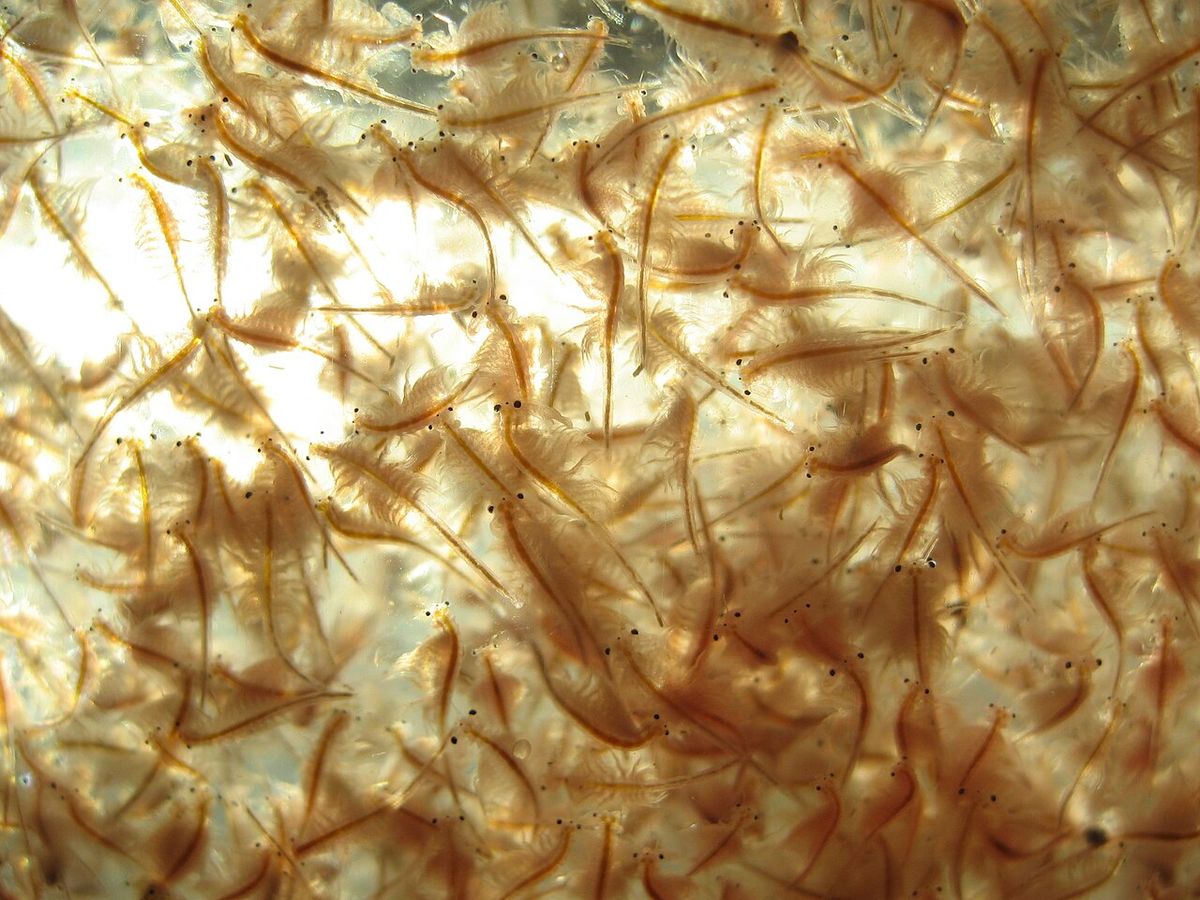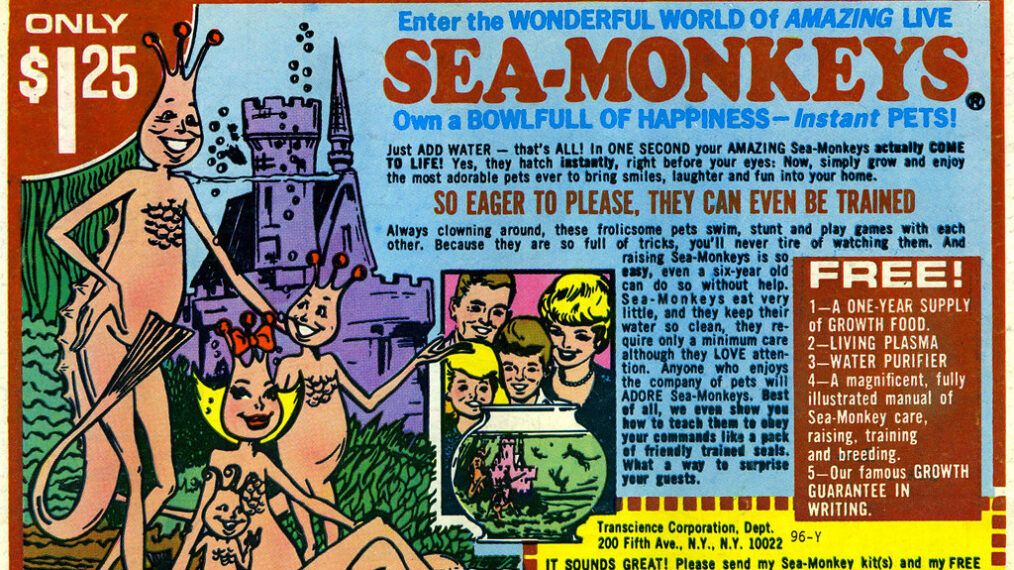Learning about sales copy with Sea Monkeys

Aside from software, books, workshops, and packaged consulting engagements… I also sell, you know, stuff. Things. Objects. That's how I got my start in business at the age of 12 and it never gets old! There's just something fun about selling physical goods.
It's also a great way to sharpen the saw.
Recently I sold a nylon bag on Poshmark, the more "prestigious" of the used fashion marketplaces.
It was a desirable bag, from a collectible brand, in a rare color. It was in excellent shape, too. But — there's a but, of course there's a but — it originally came with two straps, and I only had one of them.
And I just knew this was going to be a problem. So, to prepare, I:
- took care to show every angle in my photos, with the one strap
- wrote "Comes with chain strap only" in my brief description
- listed it cheaply — about 30% below complete bags
Yesterday, I was offered 80% of my asking price, & accepted right away.
I then messaged the buyer to confirm, in essence:
You know it comes with chain strap only, right? Which you should've seen & read?
To which they replied, in essence:
Noooo…?
Sigh.
After a brief internal argument, they decided to go through with the sale after all.
This could've all been avoided if they'd invested literally 5 seconds to look at the photos and read the literal 8 sentences of description.
Some people will see a screaming deal and never pause to wonder,
Gee… is there a reason it's SO much cheaper?
Really, they don't seem to pay attention to anything they buy, deal or not.
You can't even call them "gullible" because we're not trying to trick them, they've tricked themselves despite our best efforts. They self-scam.
Then they get angry.
And we're the ones who suffer the consequences of angry customers, returns, chargebacks, bad reviews, etc.
They make terrible customers. Customers we must actively work to avoid.
Why are they like this? Did they have a perfect, blessed childhood? Never been broke and had to shop around?
I just can't say for sure.
But I bet they never had Sea Monkeys.
Sea Monkeys, of course, are Baby's First Scam Product: Dehydrated brine shrimp eggs you hatch in a tiny red tank. Real shrimp. Real tank. Legit, right?
Except that Sea Monkeys were marketed like this:

Yeahhh. Your leggy, wriggling little shrimp aren't doing any of that.
Kids who sobbed over their Sea Monkey tanks at an impressionable age learned a valuable lesson:
There are people out there trying to trick you. Oh, and it's legal, too. Be on your guard. If it sounds too good to be true, it probably is.
That sinking feeling of you should know better is dreadful, and these kids grow into adults always looking for the trick, even (maybe especially?) when there isn't one.
Kids who never got Sea Monkeys… don't?
They tap dance through life, never agonizing over choices or consequences, never seeking reassurance before acting, favored and fortunate in all things. To them the world is a safe and happy place tailored perfectly just for them.
But when it isn't? Hoo boy, watch out! They get mad.
This is why the goal of your sales copy can't just be to get to Yes.
Because you will absolutely 100% get Yeses you do not want.
So, yes, when you're working on your sales pitch… you do want to make the jaded Sea Monkey Farmers of this world feel safe. You do want to not only handle objections, or even bust objections, but prevent those objections from ever arising in the first place.
But simultaneously… you do not want the blissed out naïfs to slide, friction-free, to the Buy button. You want to wake them up. You want to shake them up.
You must use your sales copy to signpost who the product is not for, who should not buy, because disappointment and refunds cost a lot more than never making the sale to begin with.
There is such a thing as too much success with Yes.
You don't want to be anyone's first brush with the Sea Monkey Experience.
Now… back to my bag. I clearly expected this to happen. Did I not take my own advice? Couldn't I have avoided it entirely?
If I were to do it all over again, I probably would shout NOTE: CHAIN STRAP ONLY as my very first, standalone sentence.
But, the little text box on Poshmark isn't the same as a well-crafted landing page, and the buyers aren't the same as for a SaaS, book, or course. Marketplaces like Poshmark increasingly de-emphasize reading. Working harder on the copy for the bag didn't seem like it would be worth it and, after the sale, I still think that calculus was correct.
In retrospect, what I really should've done is added text to one of the photos. Marketplace apps are very emphatic about photos.
But as with Sea Monkey packets, there are no guarantees… you can't control what buyers do and don't read, you can only do your best to design & write around their actual behavior, and get on with it.
Every sale is a chance to learn and do better next time — even if what you learn is that next time you don't want that sale at all.